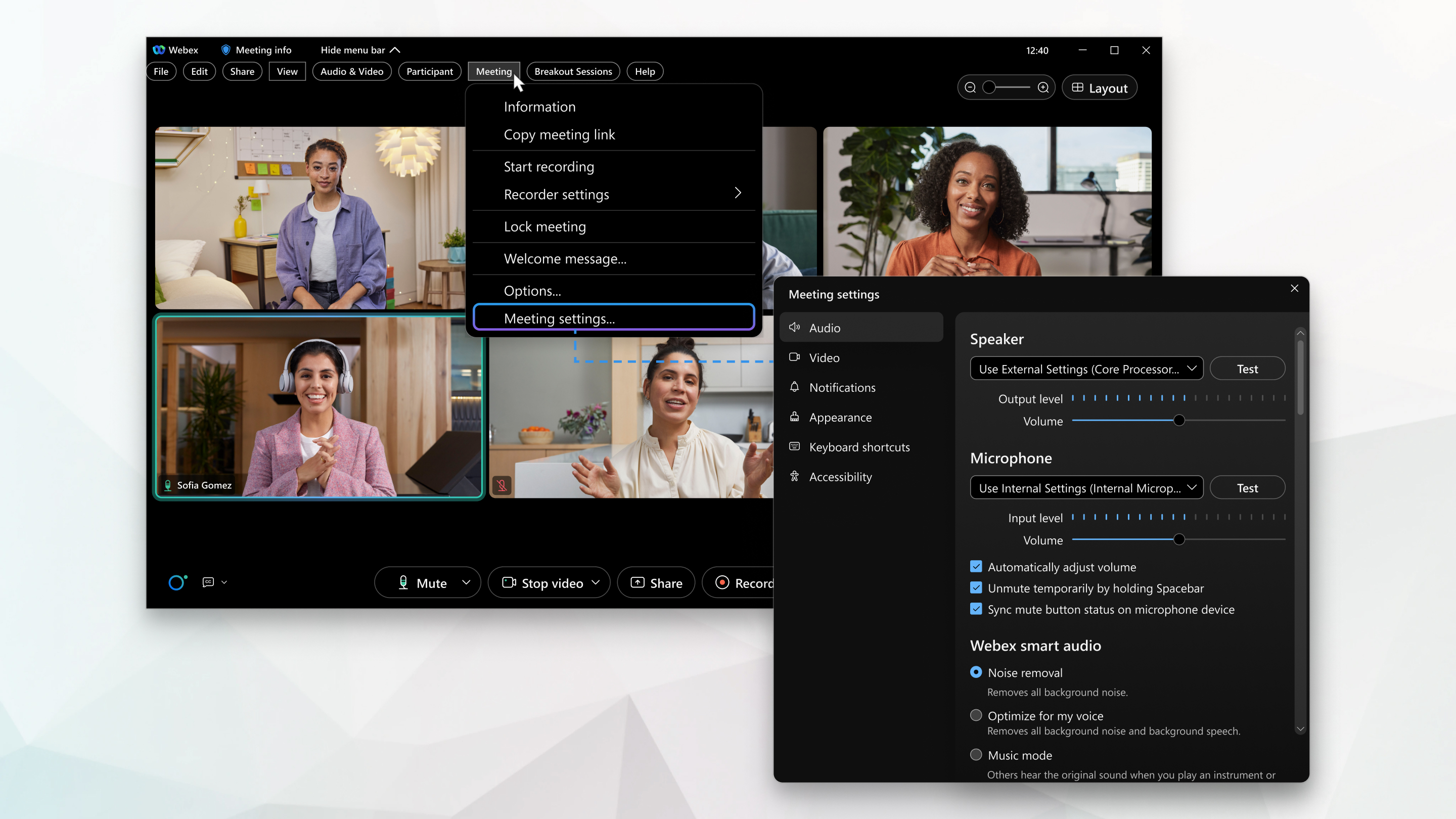Your meeting settings and preferences are organized into a single menu where you can set your speaker and microphone, adjust volume levels and set smart audio features.

| 1 |
For a meeting, click | ||||||||||||||||||
| 2 |
For a webinar, click | ||||||||||||||||||
| 3 |
For audio settings, click Audio, and then check the checkbox next to the setting you want.
| ||||||||||||||||||
| 4 |
For audio statistics, click Statistics, and then click Audio.
|
| 1 |
Click Webex Meetings. | ||||||||||||||||||
| 2 |
From the drop-down menu, click Meeting settings. | ||||||||||||||||||
| 3 |
Click Audio and then check the checkbox next to the setting you want.
| ||||||||||||||||||
| 4 |
For audio statistics, click Statistics, and then click Audio.
|

